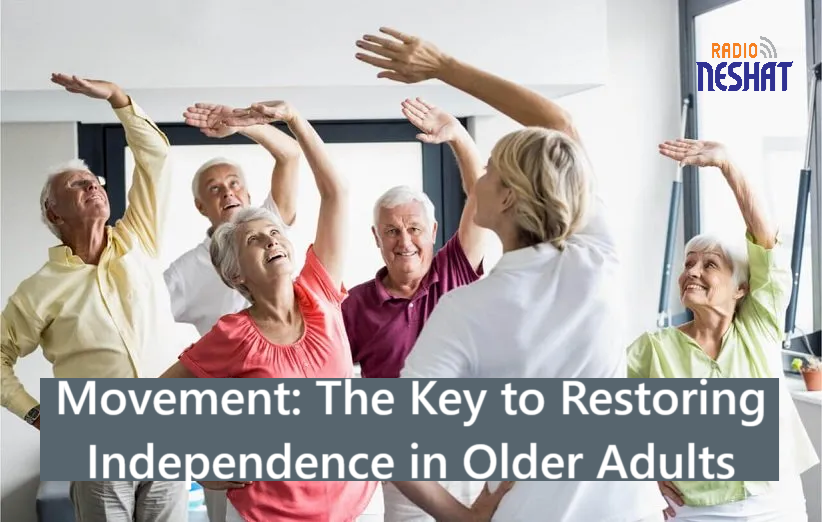حرکت؛ رمز بازگشت به استقلال سالمندان

در جهان رو به سالمندی، حرکت فقط یک توانایی نیست؛ نجاتبخشی است برای زیستن مستقل، باوقار و بانشاط.
نویسنده: دکتر نسیم فروغی | دکترای بایومکانیک بالینی – دانشگاه سیدنی
با افزایش جمعیت سالمند در جوامع پیشرفته، توجه به حفظ استقلال حرکتی، پیشگیری از ناتوانی جسمی و کاهش وابستگی به خدمات درمانی، اهمیت روزافزونی یافته است. از نگاه من بهعنوان پژوهشگر بایومکانیک بالینی، تحلیل دقیق عملکرد سیستم اسکلتی-عضلانی در این گروه، یکی از کلیدهای اصلی بهبود کیفیت زندگی و ارتقاء سلامت است.
در مطالعاتی که در سالهای اخیر انجام دادهام، بهویژه در حوزه آرتروز زانو و لگن، شاهد آن بودهام که بسیاری از مشکلات حرکتی سالمندان با اصلاحاتی جزئی در الگوهای حرکتی قابل کنترل یا حتی پیشگیری هستند. آنالیز راهرفتن (Gait Analysis) و ارزیابی دقیق زنجیرههای حرکتی بدن، ابزارهایی مؤثر در شناسایی فشارهای پنهان بر مفاصل بودهاند که میتوان با مداخلات حرکتی هدفمند آنها را کاهش داد.
در پروژههای تحقیقاتیام در دانشگاه سیدنی، از فناوریهایی مانند حسگرهای پوشیدنی، تصویربرداری دقیق و مدلسازی دینامیکی استفاده کردهام تا برنامههای توانبخشی فردمحور برای سالمندان طراحی شود. این برنامهها نهتنها به کاهش درد و بهبود عملکرد بدنی بیماران منجر شدهاند، بلکه سطح اعتماد به نفس و انگیزه آنها برای حفظ فعالیت روزمره را نیز افزایش دادهاند.
من معتقدم که راهحلهای پایدار در این حوزه، تنها از طریق تمرینات فیزیکی یا دارو حاصل نمیشود، بلکه نیازمند نگرشی جامع به سبک زندگی سالمندان است. آموزش حرکات اصلاحی ساده، پیادهروی روزانه، تمرینهای تعادلی، و ایجاد محیطهای حمایتی در خانه، از جمله اقداماتی هستند که میتوانند از آسیبهای جدی مانند زمینخوردگی جلوگیری کنند.
یکی دیگر از نکاتی که همواره در مطالعات خود بر آن تأکید داشتهام، نقش خانوادهها و مراقبان در فرآیند توانبخشی است. آموزش آنها و ایجاد فضایی همدلانه و ایمن، مسیر بازگشت سالمند به استقلال را هموارتر میکند. همچنین تلفیق رویکردهای بینرشتهای، شامل همکاری با فیزیوتراپیستها، روانشناسان و متخصصان علوم حرکتی، کیفیت مداخلات درمانی را بهطور چشمگیری افزایش داده است.
در پایان، بر این باورم که علم بایومکانیک نهتنها در خدمت تحلیل حرکت، بلکه در خدمت زندگی است. «حرکت، زندگی است»؛ و این زندگی، در هر سنی، شایسته کیفیت، نشاط و استقلال است.
----
Movement: The Key to Restoring Independence in Older Adults
Author: Dr. Nasim Foroughi | PhD in Clinical Biomechanics – University of Sydney
In an aging world, movement is no longer just a physical ability—it is a lifeline to living independently, with dignity and vitality.
As populations in developed nations continue to age, maintaining physical independence, preventing functional decline, and reducing reliance on healthcare systems have become increasingly important. From my perspective as a clinical biomechanics researcher, closely analyzing the musculoskeletal system’s performance in older adults is essential to improving quality of life and promoting overall health.
In recent years, my research—particularly in the areas of knee and hip osteoarthritis—has shown that many mobility challenges in older adults can be mitigated or even prevented through minor adjustments in movement patterns. Gait analysis and in-depth assessment of biomechanical chains have proven to be powerful tools in identifying hidden joint stress that can be alleviated through targeted physical interventions.
In projects conducted at the University of Sydney, I have utilized technologies such as wearable motion sensors, advanced imaging, and dynamic modeling to design individualized rehabilitation programs for seniors. These programs have not only reduced pain and improved physical function but have also significantly boosted patients’ confidence and motivation to maintain daily activity.
I strongly believe that lasting solutions in this area are not achieved through exercise or medication alone. They require a holistic approach to lifestyle. Teaching simple corrective exercises, encouraging regular walking, promoting balance training, and fostering supportive environments at home are critical steps in preventing serious injuries such as falls.
One of the recurring themes in my research has been the vital role of families and caregivers in the rehabilitation process. Educating them and creating a compassionate, safe environment can significantly ease the path back to independence for elderly individuals. Furthermore, integrating interdisciplinary approaches—through collaboration with physiotherapists, psychologists, and movement specialists—has greatly enhanced the quality and effectiveness of rehabilitation efforts.
Ultimately, I believe biomechanics is not just about analyzing movement; it is about enhancing life. Movement is life—and this life, at every age, deserves quality, vitality, and independence.

